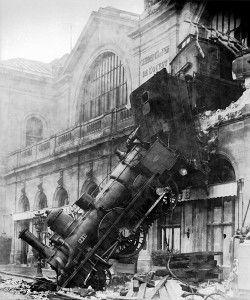LAO Blows Up Bullet Train
There’s something truly exhausting — no, dispiriting — about reading the latest state Legislative Analysts Office (LAO) report on California’s immense high-speed rail undertaking. Released at noon on May 10, the document runs just 28 pages but utterly dismantles the current, hugely expensive effort to build 800 miles of bullet train tracks.
Those following CalWatchDog.com’s reporting on the California High-Speed Rail Authority (CHSRA) over the last year have seen it all before: considerably understated costs; “highly uncertain” and “unrealistic” assumptions on financing; inadequate staff; lack of oversight from the Legislature. But reading confirmation of our reporting brings more of a hollow feeling than any satisfaction.
Building a high-speed rail system that stretches from San Diego to San Francisco is being billed as an environmental godsend that will get people out of airliners and cars and still run free of taxpayer subsidies. The reality, as the non-partisan LAO has pointed out, is that no one really knows how much the network — the largest public works project in California history — will cost or how many people it will carry when completed.
As the LAO painstakingly points out, these two monstrous questions result from a variety of problems. Let’s start with the money.
Though high-speed rail planning has been going on for decades, the effort really accelerated in 2008, when voters passed Proposition 1A, which allowed the state to float $9 billion in bonds to get the thing going. At a time of annual state budget crises, those bonds are more trouble than they’re worth.
We estimate that, should the state sell all of the $9 billion in voter-approved high-speed rail bonds, the state’s total principle and interest costs for repaying the debt would be $18 billion to $20 billion. This would require annual debt service payments of roughly $1 billion for the next two decades.
Federal Funds
It gets worse. So far, the high-speed rail authority has gotten $3.6 billion from the federal government. But the most recent authority business plan assumes the feds will ultimately fork over $17 billion to $19 billion in bullet train money.
“Given the federal government’s current financial situation and the current focus in Washington on reducing federal spending, it is uncertain if any further funding for the high-speed rail program will become available,” reported the LAO.
Clearly, the rail authority has been bending over backward to the feds to secure funding — sometimes, in ways the LAO finds appalling. For instance, they particularly dislike the recent decision to build the first bullet train segment in the sparsely populated Central Valley — a decision made at the behest of federal rail officials.
The report states:
This decision by HSRA, however, represents a big gamble that additional monies will eventually become available from the federal government or other sources to connect the Central Valley line to other major urban areas of California. The authority acknowledges that operation of the Central Valley segment by itself is infeasible because the potential ridership of a high-speed rail line within that segment alone would be insufficient to operate the system without a substantial subsidy.
It goes on like that, but I think you get the point. Even the LAO’s recommendations are surprisingly negative, and billed only as “increasing the odds that high-speed rail will succeed.”
LAO Recommendations
First and foremost, the LAO wants the Legislature to “reject HSRA’s 2011-12 budget request for $185 million in funding for consultants to perform project management, public outreach, and other work to develop the project,” and instead give them just $7 million.
The LAO also wants all federal funding agreements renegotiated, a new first segment that isn’t in the Central Valley and updated cost estimates sent ASAP over to the Legislature. They even suggested blowing up the rail authority, then putting the whole project under the purview of CalTrans. (Senator Alan Lowenthal, D-Long Beach, recently suggested making the rail authority part of the Business, Transportation and Housing Agency.)
Figuring the rail authority would just love to do all that, I contacted spokesperson Rachel Wall. But she said her office received the report at the same time as the public, and couldn’t offer a comment beyond a boilerplate statement issued under executive director Roelof van Ark’s name.
“The LAO suggestions will be thoroughly reviewed in the context of our mandate to operate under the provisions of Proposition 1A,” part of the bland statement read. “I hope to work with the Legislature to come up with solutions that benefit all Californians and allow us to move forward with the successful completion of the state’s high-speed rail system — and we hope that this report at least encourages healthy discussion towards that goal.”
-Anthony Pignataro
Related Articles
New bullet-train biz plan still doesn’t address judge’s objection
On Friday, the California High-Speed Rail Authority released a new business plan for the bullet train project. The authority’s document
CA shakedown headed for a breakdown
June 4, 2012 By Katy Grimes California legislators looked as if they were working hard last week, with hundreds of
Wall Street doubts CA shale hype — but not Occidental
April 11, 2013 By Chris Reed Bloomberg News, which is doing an increasingly good job covering California of late, had





